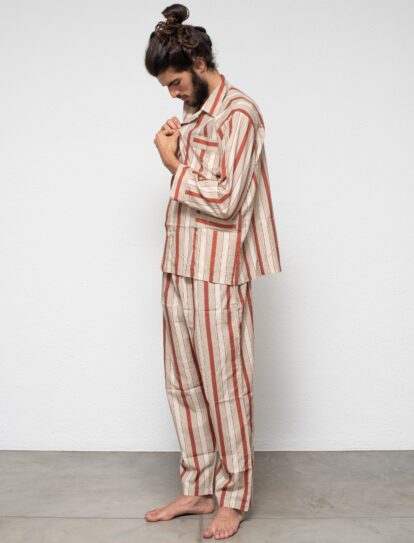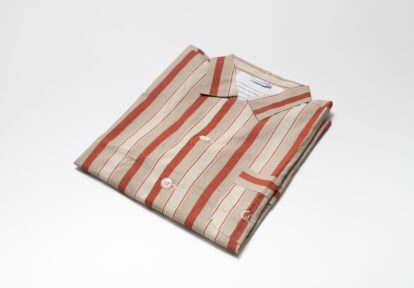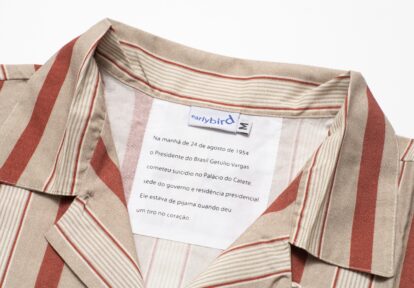On the morning of August 24, 1954, Brazil’s president Getulio Vargas committed suicide at Palace of Catete, the government seat and presidential residence. He was in his pajamas when he shot himself in the heart.
The pajamas Getúlio Vargas was wearing when he killed himself became part of the collection of the Museum of the Republic in the same Palace of Catete and it is in a window display in his bedroom, along with the gun and the bullet used in the suicide. The bullet hole, blood stains and cut marks made to remove the pajamas from the corpse already stiffened are visible. Only the pajamas jacket is displayed, since the pants were buried with the president.
Having been invited to participate in an exhibition linked to the fair ArtRio, in September 2015, whose purpose is the presentation of large-scale works in the gardens of the Museum of the Republic , I began to research the history of the museum and its collection. Thus, I decided to take the iconic pajamas, object that embodies a turning point in the modern history of the country, as the material for the project.
The proposal of Catete is to produce and market, in partnership with a pajamas manufacturer, a version of the pajamas used by Getúlio Vargas at the time of his suicide. Composed of pants and jacket, the version is based on the condition of the pajamas before the suicide, without any shot marks, blood stains or cuts.
My interest is how pajamas, an everyday, intimate, private object have become a symbol of that historical moment. It is intriguing to think how the institution molds, by contingency, over the years and various administrations, a version of the story, and centralizes the narrative of the events of August 1954 on Getulio Vargas’ pajamas.
The trigger for Catete was the invitation to the exhibition whose expectation was to produce a large-scale work. In Catete, the scale is defined as the dimension the reference object has in the history of the country, and replicated in the effort of insertion in the commercial circuit. It is the possibility of using, wearing the piece, sleeping with the work and creating with it a personal relationship that enables the questioning of the contents associated with this element so representative of the peculiarities of our historical constitution.



